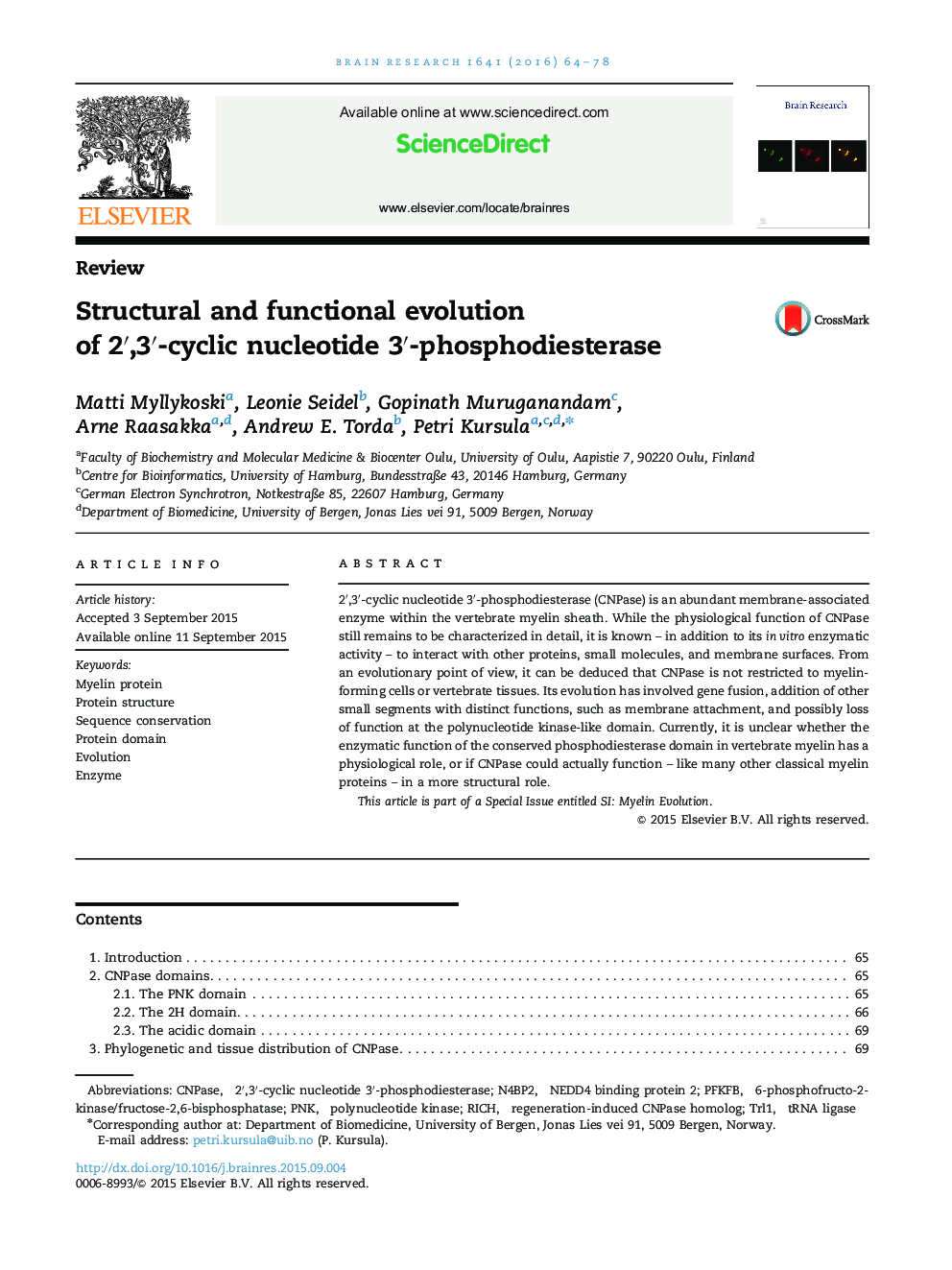| Article ID | Journal | Published Year | Pages | File Type |
|---|---|---|---|---|
| 6262505 | Brain Research | 2016 | 15 Pages |
â¢CNPase is a highly abundant enzyme in myelin.â¢The function of vertebrate CNPase is unknown.â¢Proteins homologous to CNPase are found across different domains of life.â¢CNPase evolution includes loss and gain of function.
2â²,3â²-cyclic nucleotide 3â²-phosphodiesterase (CNPase) is an abundant membrane-associated enzyme within the vertebrate myelin sheath. While the physiological function of CNPase still remains to be characterized in detail, it is known - in addition to its in vitro enzymatic activity - to interact with other proteins, small molecules, and membrane surfaces. From an evolutionary point of view, it can be deduced that CNPase is not restricted to myelin-forming cells or vertebrate tissues. Its evolution has involved gene fusion, addition of other small segments with distinct functions, such as membrane attachment, and possibly loss of function at the polynucleotide kinase-like domain. Currently, it is unclear whether the enzymatic function of the conserved phosphodiesterase domain in vertebrate myelin has a physiological role, or if CNPase could actually function - like many other classical myelin proteins - in a more structural role.This article is part of a Special Issue entitled SI: Myelin Evolution.
